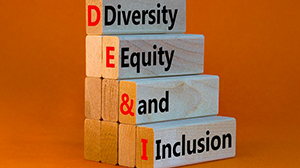Daniel Davidson, MD, MBA, DBA, PHD
Introduction:
Giving to charities shines as a ray of hope and compassion in a society too frequently marked by difficulties and inequality. Donations to charities have a significant ripple effect that reaches well beyond the person who make the initial contribution. Giving to charity may in fact, transform communities and promote a culture of empathy and solidarity while also developing compassionate civilizations. In this article, we examine how contributing to charitable causes might act as a spark for creating a more compassionate society.
Nurturing Empathy and Understanding
By supporting charitable causes, one can cultivate empathy and understanding in others by connecting with them on a deep level and showing compassion for them despite their circumstances or background. When people give to the less fortunate, whether it is with money, time, or resources, they are demonstrating their awareness and empathy for the struggles that other people endure. Empathy is more than just pity; it’s walking in another person’s shoes, realizing their humanity, and comprehending their hardships.
Giving to charities offers people a concrete means of showing support for those who are less fortunate, disenfranchised, or experiencing hardship. Contributions to causes that tackle social concerns like hunger, homelessness, poverty, or illness show people are willing to help and encourage one other. This display of empathy promotes understanding and togetherness within society by bridging the divide between various social groupings.
Giving to charity acts as a spark for bringing attention to important social concerns and promoting change. Donors who fund organizations that fight systemic injustices or advance social equality not only provide financial support, but they also elevate the voices of underrepresented groups and push for answers to the underlying causes of social issues. People are inspired to become active change agents in their communities and have a deeper awareness of the complexities of social issues through this proactive engagement.
Activating Group Initiatives
“Activating Group Initiatives” describes the process of energizing and mobilizing a group of people to work toward a shared goal. Within this framework, “group initiatives” usually refer to tasks or undertakings that necessitate cooperation and synchronization between multiple individuals or parties involved.
Establishing Goals:
Clearly defining the purposes and objectives of the group is the first step towards kicking off group efforts. These objectives should provide the group a clear direction for its work and be SMART (specific, measurable, achievable, relevant, and time-bound).
Developing Engagement:
Any initiative’s success depends on its ability to keep group members interested. This entails explaining the goal and importance of the project, enlisting support, and inspiring others to take an active role and offer their knowledge, abilities, and resources.
Establishing Leadership:
Group initiatives need to be guided and facilitated by effective leadership. A selected leader or leadership team can give instructions, assign responsibilities, settle disputes, and make sure the group remains motivated and focused on reaching its objectives.
Making a Plan of Action:
To organize and coordinate the group’s actions, a thorough plan of action must be developed. This plan should specify the duties, deadlines, roles, and materials needed to fulfill the initiative’s goals.
Encouraging Collaboration:
The secret to optimizing output and utilizing group capabilities is to foster cooperation and teamwork among participants. This may be opening up channels of communication, setting up frequent get-togethers or check-ins, and encouraging an environment of respect and cooperation.
Implementing Strategies:
In order to carry out the plan of action and attain the intended results, particular strategies and tactics must be carried out. Research, planning, campaign implementation, event or activity coordination, and resource development are a few examples of what this may entail.
Monitoring Progress:
To make sure the group initiative stays on course and produces the desired results, it is imperative to routinely monitor and assess progress. This could entail monitoring important performance metrics, evaluating achievements, and adjusting as necessary to overcome any difficulties or roadblocks that appear.
Celebrating Successes:
Maintaining momentum and morale within the group is aided by acknowledging and appreciating accomplishments along the way. Acknowledging and recognizing group members’ contributions promotes a sense of satisfaction and togetherness, regardless of the accomplishment—be it hitting milestones, conquering difficulties, or accomplishing the ultimate goal.
Breaking down Barriers
The act of removing barriers that separate individuals or groups on the basis of socioeconomic class, religion, race, ethnicity, gender, or any other type of difference is referred to as “breaking down barriers.” Prejudices, preconceptions, discrimination, and systemic inequities that restrict opportunities and maintain social divisions are some examples of these hurdles.
In the context of charity giving, breaking down barriers refers to bridging these gaps and promoting inclusivity, empathy, and understanding. Giving to charity helps with this process in the following ways:
Encouragement of Inclusivity:
Charitable contributions frequently fund programs designed to improve the lot of underprivileged or marginalized groups. Charitable organizations encourage inclusion and equitable access to opportunities and resources by offering resources, assistance, and chances to individuals who have historically been marginalized or excluded.
Taking on Stereotypes:
By emphasizing the varied needs and experiences of various populations, charitable giving takes on stereotypes and false beliefs. Contributions to initiatives that assist oppressed groups show empathy and solidarity, dispelling negative preconceptions and advancing a more complex understanding of the many identities and experiences that people have.
Promoting Empathy and Understanding:
By enticing people to reach out to and assist those going through hardship, charitable giving promotes empathy and understanding. People who participate in philanthropic causes frequently develop empathy and compassion across societal divisions as a result of their increased awareness of others’ struggles.
Building Bridges for Collaboration:
Charitable giving unites people with different origins and viewpoints to collaborate toward shared objectives. Individuals and communities can work together to bring about positive change, removing obstacles and erecting bridges of cooperation and solidarity, by supporting causes that tackle systemic problems and advance social justice.
Developing Social Justice:
By funding programs that address structural injustices and advance equal rights and opportunities for all, charitable giving plays a critical role in achieving social justice. By contributing to initiatives that support structural reforms, community empowerment, and policy improvements, people help to break down the barriers that uphold injustice and inequality.
Fostering a Culture of Generosity
“Fostering a Culture of Generosity” is the process of establishing a social climate in which charitable giving, compassion, and kindness are not only accepted but also honored. It entails developing an attitude and way of doing that puts other people’s welfare first and understands the value of lending resources, time, and skills to others in order to further the common good.
Encouraging Cooperation and Sharing:
People are encouraged to share their resources—food, money, time, or skills—with others who are in need when living in a generous culture. People prefer teamwork and cooperation than rivalry, and they are prepared to cooperate to overcome obstacles and lend support to one another.
Promoting Acts of Kindness:
Small deeds of kindness are valued and praised as significant contributions to the welfare of others. Every act of kindness, whether it be opening a door for someone, lending a helping hand, or making a donation to a worthy organization, helps to build a community that is more understanding and kind.
Leading by Example:
By setting a positive example, leaders and other powerful people can greatly contribute to the development of a giving culture. A culture of giving is inspired in society when leaders exhibit generosity and philanthropy in their decisions and deeds. This provides a positive example for others to follow.
Creating Giving Opportunities:
Giving people the chance to give back to their communities helps them feel connected and purposeful. People are empowered to make a significant difference and support issues they care about, whether through volunteer work, fundraising activities, or philanthropic endeavors.
Acknowledging and Honoring Generosity:
Giving thanks and honoring charitable deeds serves to highlight their significance in our society. By praising people and organizations in public for their achievements, we encourage others to do the same and spread generosity and goodwill.
Building Solidarity and Trust:
Generosity in society cultivates solidarity and trust among its members. People are more willing to return kindness when they feel appreciated and supported by their community, starting a positive feedback loop of goodwill and support.
Promoting Personal Fulfillment and Well-being
Encouraging personal fulfillment and well-being by charity giving entails the natural joy and good vibes people get from helping causes they care about. This is a more thorough explanation:
Sense of Purpose:
Contributing to charitable causes enables people to live lives that are consistent with their morals and principles. A person experiences a sense of purpose and fulfillment when they support a cause that is important to them, whether it be poverty alleviation, healthcare, education, or the environment.
Connection and Belonging:
Giving back to the community helps people feel connected and like they belong. One’s sense of connection to others who share their values and objectives is strengthened when they engage in group initiatives to address social issues or assist those in need. General fulfillment and well-being are enhanced by this sense of belonging.
Gratitude and appreciation:
Contributing to charitable causes frequently entails acknowledging one’s own privilege and expressing thankfulness for one’s possessions. Donations to organizations that support underprivileged people or communities assist people develop a greater awareness of their own resources and circumstances. Feelings of contentment and fulfillment are influenced by this thankfulness.
Impact and Empowerment:
Witnessing the concrete results of one’s philanthropic endeavors may be very gratifying and powerful. People find a sense of fulfillment in knowing that their activities have had an impact, whether it is by receiving updates on the status of a project, seeing the good change in the lives of recipients, or just knowing that one has contributed to a bigger communal effort.
Positive Emotions and Well-Being:
Several studies have demonstrated the positive effects of compassion and altruism on happiness, contentment, and general well-being. Giving to charity, whether by donations, volunteering, or advocacy, causes people to feel happy, compassionate, and fulfilled—emotions that are good for their mental and emotional well-being.
Conclusion:
Contributing to charities is a strong way to effect positive change in a world full of obstacles. Giving builds compassionate communities through developing empathy, inspiring group action, dismantling obstacles, cultivating a culture of generosity, and advancing personal fulfillment and well-being—benefits that extend beyond the obvious effects of generous contributions. People make the world more caring, just, and resilient when they band together to support causes they are passionate about. Together, let’s embrace the transforming power of giving and create a better future for future generations.








